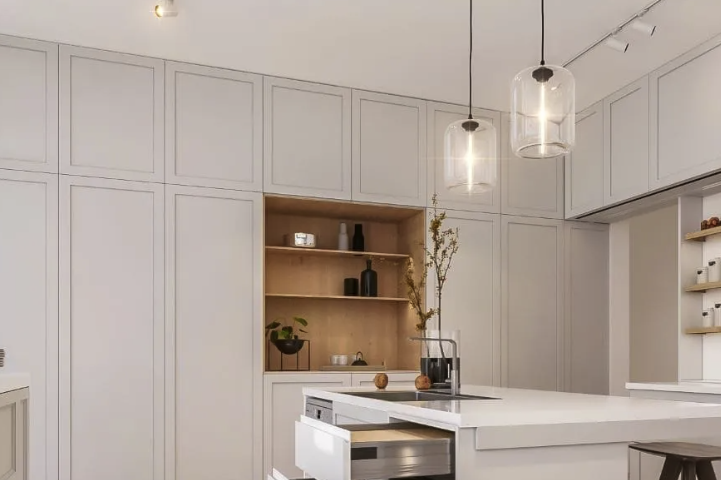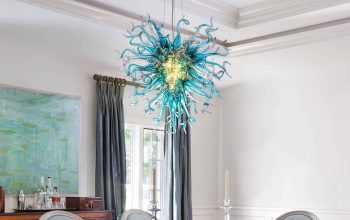Glass dining chandeliers have long been a symbol of elegance and sophistication in home decor. These stunning light fixtures not only illuminate a dining space but also serve as a focal point that can elevate the overall aesthetic of the room. The interplay of light and glass creates a captivating ambiance, making dining experiences more enjoyable and memorable.
With a variety of styles, shapes, and sizes available, glass chandeliers can complement any design scheme, from traditional to contemporary. The allure of glass chandeliers lies in their versatility and ability to transform a space. Whether it’s a grand dining room with high ceilings or a cozy nook, the right chandelier can enhance the atmosphere, providing both functional lighting and artistic flair.
As homeowners increasingly seek to create personalized spaces that reflect their tastes, glass chandeliers have emerged as a popular choice for those looking to make a statement in their dining areas.
The History of Glass Chandeliers
The Early Years
In the early days, chandeliers were primarily made from wood and iron, with simple structures that held candles, providing light in dark spaces.
The Renaissance and the Rise of Venetian Glassmaking
As glass-making techniques advanced during the Renaissance, chandeliers began to evolve into more intricate designs. Venetian glassmakers, in particular, became renowned for their craftsmanship, creating exquisite chandeliers adorned with colorful glass elements and elaborate shapes.
A Symbol of Luxury and Status
By the 18th century, glass chandeliers had become a staple in European palaces and affluent homes. The introduction of lead crystal further enhanced their appeal, allowing for greater brilliance and clarity. These luxurious fixtures were often lavishly decorated with prisms and pendants that refracted light, creating dazzling displays. The opulence of glass chandeliers reflected the wealth and status of their owners, making them coveted items in high society. As the Industrial Revolution progressed, mass production techniques made these elegant fixtures more accessible to the middle class, leading to their widespread popularity in homes across Europe and America.
Choosing the Right Glass Chandelier for Your Dining Room
Selecting the perfect glass chandelier for your dining room involves considering several factors, including size, style, and the overall design of the space. The dimensions of the chandelier should be proportionate to the dining table and the room itself. A general guideline is to choose a chandelier that is about one-half to two-thirds the width of the table it will hang above.
This ensures that the fixture is visually balanced and does not overwhelm the space. Style is another crucial aspect to consider when choosing a glass chandelier. From modern minimalist designs featuring sleek lines to ornate vintage pieces with intricate detailing, there is a wide array of options available.
It’s essential to select a chandelier that complements the existing decor of your dining room. For instance, a contemporary glass chandelier with geometric shapes may work well in a modern setting, while an antique crystal chandelier could enhance a traditional or vintage-inspired space. Additionally, consider the color and finish of the glass; clear glass can create an airy feel, while colored or frosted glass can add warmth and character.
How to Properly Install and Maintain a Glass Chandelier
Installing a glass chandelier requires careful planning and execution to ensure safety and functionality. Before installation, it’s important to turn off the power at the circuit breaker to avoid any electrical hazards. The chandelier should be hung at an appropriate height—typically 30 to 36 inches above the dining table—to provide adequate illumination without obstructing views across the table.
If the chandelier is particularly large or heavy, it may be necessary to use additional support from ceiling joists or install a mounting bracket designed for heavier fixtures. Once installed, maintaining a glass chandelier is essential for preserving its beauty and functionality. Regular cleaning is necessary to remove dust and grime that can accumulate on the glass surfaces.
A soft microfiber cloth or feather duster can be used for routine dusting, while a mixture of warm water and mild dish soap can help remove more stubborn stains. It’s advisable to avoid harsh chemicals or abrasive materials that could scratch or damage the glass. Additionally, periodic checks on the electrical components are important; replacing burnt-out bulbs promptly ensures optimal lighting and prevents potential fire hazards.
The Impact of a Glass Chandelier on Your Dining Room Decor
A glass chandelier can significantly influence the overall decor of a dining room, serving as both a functional light source and an artistic statement piece. Its presence can create a sense of grandeur and sophistication, instantly elevating the ambiance of the space. The way light interacts with glass—reflecting, refracting, and casting intricate shadows—adds depth and dimension to the room, enhancing its visual appeal.
Moreover, a well-chosen chandelier can tie together various design elements within the dining room. For example, if your decor features metallic accents or rich textiles, a glass chandelier with metallic finishes or colored glass can harmonize these elements beautifully. The interplay between light and material can create a cohesive look that feels intentional and thoughtfully curated.
In contrast, an oversized or overly ornate chandelier may dominate the space if not chosen carefully, leading to an imbalance in design.
Tips for Pairing Your Glass Chandelier with Other Lighting Fixtures
When designing your dining room lighting scheme, it’s essential to consider how your glass chandelier will interact with other lighting fixtures in the space. Layering different types of lighting—ambient, task, and accent—can create a well-rounded atmosphere that caters to various needs throughout the day. For instance, while your chandelier provides ambient lighting for dinner parties or family meals, additional task lighting may be necessary for activities like reading menus or working on crafts at the table.
To achieve harmony among your lighting fixtures, consider using complementary styles and finishes. If your chandelier Yigolighting features clear glass with polished chrome accents, you might choose wall sconces or table lamps with similar materials to create a cohesive look. Additionally, dimmer switches can enhance flexibility by allowing you to adjust the brightness according to different occasions—bright for lively gatherings or soft for intimate dinners.
This thoughtful approach ensures that your dining room remains functional while also exuding style.
Incorporating a Glass Chandelier into Different Dining Room Styles
Glass chandeliers can seamlessly integrate into various dining room styles, enhancing each aesthetic in unique ways. In traditional settings, ornate crystal chandeliers with intricate detailing can evoke a sense of timeless elegance. These fixtures often feature cascading crystals that catch light beautifully, creating an enchanting atmosphere reminiscent of grand ballrooms.
Conversely, in modern or minimalist dining rooms, sleek glass chandeliers with clean lines and geometric shapes can provide a striking contrast against simpler furnishings. These contemporary designs often emphasize transparency and simplicity, allowing them to blend effortlessly into open-concept spaces without overwhelming other design elements. For rustic or farmhouse-style dining rooms, consider chandeliers made from reclaimed wood combined with glass accents; this combination adds warmth while maintaining an inviting ambiance.
The Timeless Appeal of Glass Chandeliers in Home Decor
The enduring popularity of glass chandeliers in home decor can be attributed to their ability to transcend trends while remaining relevant across generations. Their versatility allows them to adapt to changing design preferences without losing their charm or functionality. As homeowners seek ways to personalize their spaces, glass chandeliers continue to be favored for their capacity to add character and sophistication.
Moreover, advancements in technology have led to innovative designs that incorporate energy-efficient LED lighting without compromising aesthetic appeal. This evolution ensures that glass chandeliers remain not only beautiful but also practical choices for modern living spaces. As we move forward into an era where sustainability is increasingly prioritized in design choices, glass chandeliers stand out as timeless fixtures that marry elegance with functionality—making them an enduring choice for any dining room decor.




